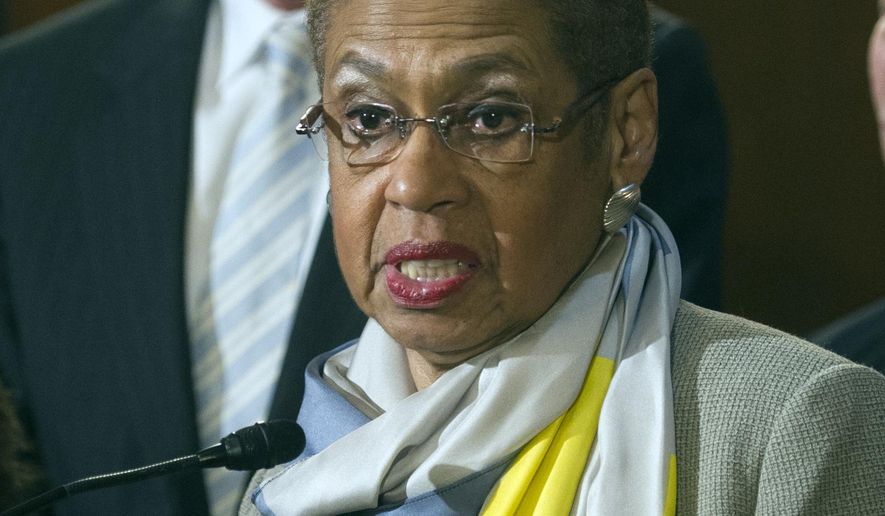D.C. Delegate Eleanor Holmes Norton predicts that the Department of Homeland Security’s move into Southeast “will give a boost to Ward 8” because where federal workers go, commercial development follows.
“It’s the first federal building to cross [the] Anacostia,” noted Ms. Norton, a Democrat and the District’s nonvoting representative in Congress.
In 2006, Homeland Security and the General Services Administration, which manages federal properties, hatched a $3.45 billion plan to move the agency — and consolidate its widely scattered components — from its current headquarters on Nebraska Avenue in Northwest to the former west campus of St. Elizabeths Hospital on Martin Luther King Boulevard in Southeast.
Since then, many observers had expressed doubt the project would be completed, as delays in procurement and construction mounted. But in December 2013, the Coast Guard, which operates under Homeland Security, moved onto the St. Elizabeths campus, marking the completion of the first phase of the consolidation project.
With funding in the fiscal 2016 budget for the new Federal Emergency Management Agency building and construction underway for offices to house Homeland Security Secretary Jeh Johnson and his top 700 staff members, Ms. Norton said the rest of the DHS project will be finished, hopefully, by 2021.
“Many thought the DHS project would be a lost cause,” she told The Washington Times on Monday. “I predict that, considering FEMA is the last building to be constructed, the DHS consolidated headquarters will be completed.”
The Homeland Security campus will comprise 4.5 million square feet of workspace, and the General Services Administration said it is the largest construction project in the D.C. area since the Pentagon was built during World War II.
The relocation of Homeland Security’s headquarters and the consolidation of its various agencies will bring about 14,000 federal workers to Southeast, according to GSA statistics.
That’s good news for Ward 8, Ms. Norton says, because more federal workers in the area means more amenities to accommodate them and residents.
“As federal workers come, so come all the trappings they’re used to,” she said. “Federal workers don’t want to go where there’s no development.”
“Most want commercial development,” she added. “Federal workers demand that.”
Ms. Norton cited the expanded commercial development in the NOMA (north of Massachusetts Avenue) neighborhood, near Union Station, as an example of how federal buildings can positively affect parts of the District that weren’t previously home to federal offices.
The headquarters for the Bureau of Alcohol, Tobacco, Firearms and Explosives moved to NOMA at 99 New York Ave. NE in 2007, and the Security and Exchange Commission moved in 2004 to its current digs at 100 F St. NE.
“It was a wasteland there,” Ms. Norton said.
Since then, several luxury apartment buildings, businesses like the Harris Teeter supermarket and numerous restaurants have moved into the area.
“It’s all the function of federal development,” Ms. Norton said.
The General Services Administration, in a recent statement, touted the same economic benefits as the congresswoman.
“When completed, the new DHS headquarters will bring thousands of workers to the neighborhood to buy food and supplies, along with attracting consulting firms doing business with DHS to office space nearby,” the agency said in a Sept. 1 statement.
The General Services Administration also created a job opportunities center at the construction site to provide local residents with information on obtaining work on the project.
• Ryan M. McDermott can be reached at rmcdermott@washingtontimes.com.




Please read our comment policy before commenting.